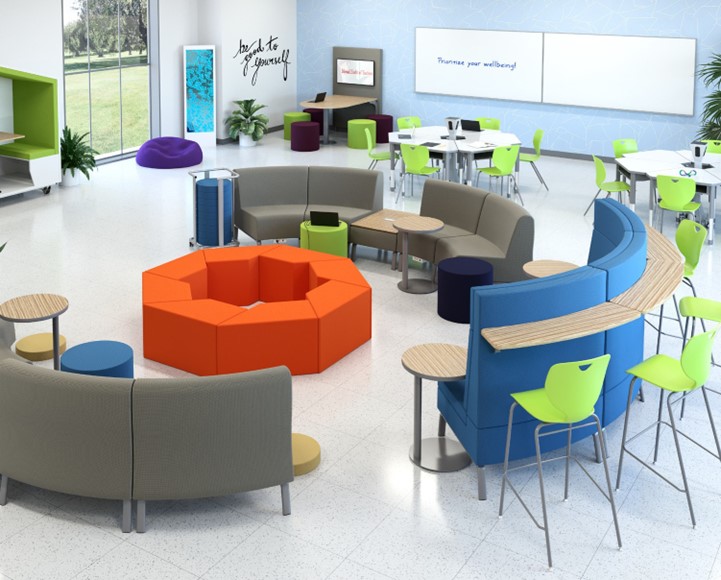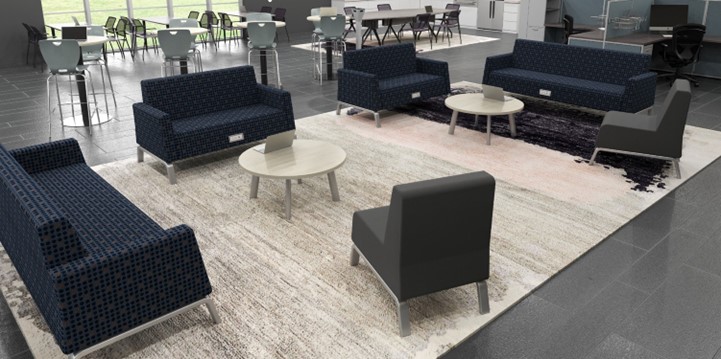Student wellness is a top concern among teachers and administrators in K-12 education settings. But what about the teachers, paraprofessionals, and other support staff who are tasked with educating students every day? Educators face numerous challenges every day, such as adapting to new technologies, implementing innovative teaching practices, and managing shifting expectations in the classroom. Many also juggle personal stressors while supporting friends and family through difficult circumstances.
As schools continue to innovate and evolve, teachers work tirelessly to address learning gaps, manage a rise in behavioral challenges, and meet the increasing social-emotional needs of their students — all while balancing their own well-being. Supporting the mental health and wellness of educators is crucial to maintaining a healthy and productive learning environment for everyone.

Just as flight attendants tell parents to put on their own oxygen masks before helping their children, teachers must tend to their own emotional needs before they can address those of their pupils. In short: Only when we first take care of our teachers can teachers take care of our students.
The design of classrooms, lounge areas, and other school spaces plays a key role in supporting — or suppressing — teacher wellness. I’ll explain how in a minute. But first, I want to explore the critical connection between teacher wellness and retention.
TEACHER WELL-BEING IS A KEY RETENTION STRATEGY
Even before the pandemic, teacher hiring and retention were concerns for many school systems. A 2021 report from Hanover Research notes that teacher shortages have become more acute over the last decade-plus as fewer prospective teachers have entered the profession. Citing data from the Center for American Progress, the Hanover report says that total enrollment in teacher preparation programs fell from 940,520 students in 2010 to 604,264 students in 2018. That’s a 36-percent decline in just eight years.
COVID intensified the problem. Teaching has always been challenging, and the pandemic made it even more so and we are still seeing the lingering effects. Even today, teachers are experiencing burnout — and an alarming number have left or are thinking about exiting the teaching profession. In fact, about a third of teachers are at least somewhat likely to leave the profession soon, Hanover observes — up from 8 percent prior to the pandemic.

Supporting teacher well-being is a key strategy for reducing attrition and improving teacher retention. About three out of four teachers say they’re currently stressed, anxious, or overwhelmed. K-12 leaders can minimize this stress and foster teacher wellness by creating a positive and healthy working environment for faculty. This involves establishing policies, practices, and a culture that is responsive to teachers’ needs and that communicates their value to the school community. For instance:
- Recognize employee contributions in staff meetings, newsletters, and other public venues.
- Encourage a culture of openness so that teachers can feel comfortable speaking up if they’re under too much pressure.
- Train department heads and managers to spot stress and poor work-life balance.
- Regularly review staff workloads to make sure they’re achievable.
- Provide support for staff members who are parents and caregivers so they’re not forced to leave.
- Provide counselling and support services for teachers, or else allow them to attend such services during work hours as necessary.
- Encourage stress-relieving activities such as lunchtime exercise or relaxation classes.
- Create spaces for staff to relax, recharge, and rest.
- Ask employees what would improve their work-life harmony.
The design of school spaces can also encourage teacher wellness. Teachers deserve spaces to work and relax that are comfortable and give them choices. Spaces that are designed for maximum success, equipped with tools and resources that empower teachers to thrive. Spaces that promote wellness through the use of comfortable furniture, relaxation tools, aromatherapy, and clean air. Spaces that give teachers opportunities to connect and collaborate with their peers and encourages both physical and mental wellness.
IT’S TIME TO RETHINK TEACHER LOUNGES
In many schools, the teachers’ lounge is little more than a soda machine and a picnic table. Our teachers deserve better — and providing a comfortable place for them to relax, reconnect, and recharge goes a long way toward establishing teacher wellness. Here are three key recommendations to consider when designing faculty lounges that foster staff well-being.

MAKE THE SPACE INVITING
Provide soft seating and other comfortable furnishings that encourage teachers to stay and relax. Give them plenty of styles and options to choose from, including individual lounge chairs, rockers, couches, and tables. That way, teachers can find seating that works best for their needs in the moment.
SUPPORT MOVEMENT
If we create a space that includes room to move, stretch, and relieve stress, then teachers can go to class full of energy. According to Cecilia Cruse, Occupational Therapist and Subject Matter Expert at School Specialty, “Vestibular input (movement) has multiple influences on our brain’s ability to organize and self-regulate. Research shows that the psychological and physical benefits of exercise can also help combat depression and help improve mood and reduce anxiety. I once had a Physical Therapist tell me that ‘motion is lotion,’ and this holds true for both the physical and psychological benefits of movement.”
ENCOURAGE CONNECTION
Research shows a clear link between human connection and wellness. For instance, Emma Seppala, director of Stanford University’s Center for Compassion and Altruism Research and Education, observes that people who feel more connected to others have lower levels of anxiety and depression.
Yet, teaching can often feel like an isolating profession. Many teachers spend much of the school day within their own classroom, not coming into contact with other adults. Effective teacher lounges and other school spaces can foster peer connection with design elements that encourage staff to interact and collaborate, such as armless soft seating and tables of various sizes to accommodate multiple people.
PROVIDE TOOLS FOR PRODUCTIVITY
Make sure teachers are well equipped to work individually or in groups while they’re spending their free periods within teacher lounges and other collaborative school spaces. For instance, you might use mobile “power towers” to bring power supplies to where teachers need these while they work, or you might embed power supplies within tabletop surfaces and soft seating. You might also create “huddle spaces” with interactive screens for groups of teachers to collaborate when planning lessons or analyzing student data.
SUPPORT TEACHERS WITH MORE DYNAMIC CLASSROOMS
One reason teachers are burning out is because the stress and anxiety is affecting student behavior. In fact, two out of three teachers, principals, and district leaders say students are misbehaving more today than they did in fall 2019, an Education Week survey reveals. Well-designed classrooms and other instructional spaces can help mitigate behavioral issues and engage students more effectively in their learning, which in turn can boost teacher wellness and morale. Here’s how.
1) Make Classroom Stimulating and Engaging
We want students to be excited about learning when they enter the classroom. Seeing the desks arranged in rigid rows when they walk into the room every day isn’t going to inspire them. On the other hand, a mix of colors, textures, materials, and seating styles creates an inviting space that makes kids eager to learn — while encouraging creativity and exploration.
2) Empower Students with Choices
When students are in control of their learning, they’re more invested in their education and more motivated to succeed. A dynamic learning environment can help create this sense of autonomy by giving students choices in where to sit and how to learn — including regular chairs and desks but also soft seating and café-style tables and stools. This helps them take ownership over the learning process, leading to deeper engagement.
3) Let Them Get the ‘Wiggles’ Out
Students should have opportunities to move around as well. Studies show a clear connection between movement and achievement. Movement increases students’ blood flow to their brains, helping them feel more alert and allowing them to focus on their learning. As Occupational Therapist Cecilia Cruse notes: “In the iconic article ‘Exercise is ADHD Medication,’ author James Hamblin makes a compelling case in citing research showing that movement helps support focus, memory, and cognitive flexibility — and it’s critical to academic performance.
To facilitate movement, classrooms should include plenty of open spaces, such as wide walkways between desks and tables. Schools should also consider using furniture that allows for movement as students are working, such as wobble stools that enable them to rock back and forth or standing desks that enable them to stretch their legs.
WELL-DESIGNED SCHOOL SPACES ARE CRITICAL
According to the Hanover report, 83 percent of school systems struggle with teacher recruitment and retention. Improving teacher well-being can make these tasks a lot easier — and well-designed classrooms, teachers’ lounges, and other school spaces are critical components in supporting wellness not just for students but for entire school communities.

